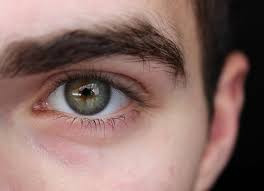Definisi
Bell’s palsy adalah suatu kondisi ketika otot wajah mengalami kelumpuhan pada satu sisi. Kelumpuhan ini terbatas pada wajah, dan disebabkan oleh adanya masalah pada saraf yang berfungsi untuk mengatur gerak otot-otot wajah. Angka kejadian Bell’s palsy adalah sekitar 15-20 kejadian per 100.000 penduduk per tahunnya.
Penyebab
Saraf memiliki fungsi yang bermacam-macam, di antaranya adalah menghantarkan rangsang dari luar (sensorik) dan menggerakkan anggota tubuh yang dipersarafi (motorik). Pada Bell’s palsy, saraf yang mengalami gangguan adalah saraf motorik yang mengatur pergerakan otot wajah. Gangguan ini hanya terjadi pada satu sisi wajah.
Penyebab Bell’s palsy secara pasti tidak diketahui. Namun, kejadian Bell’s palsy terbukti berkaitan dengan penyakit-penyakit yang disebabkan oleh virus seperti virus herpes simplex (virus penyebab penyakit herpes), virus varicella-zoster (virus penyebab cacar air dan cacar naga), dan virus Epstein-Barr (virus penyebab penyakit mononukleosis). Faktor-faktor tersebut menyebabkan saraf mengalami peradangan dan pembengkakan. Pembengkakan ini menekan saraf yang mengatur pergerakan wajah sehingga terjadi kelumpuhan pada satu sisi wajah.
Faktor Risiko
Bell’s palsy dapat terjadi pada segala usia, namun paling banyak ditemukan pada usia dewasa dengan median usia 40 tahun. Bell’s palsy juga dapat terjadi pada ras manapun. Faktor risiko Bell’s palsy adalah adanya riwayat infeksi virus, diabetes, kehamilan, obesitas, dan hipertensi. Ibu dengan riwayat tekanan darah tinggi pada saat kehamilan tua (preeklampsia) juga memiliki risiko tinggi terkena Bell’s palsy.
Gejala
Gejala pada Bell’s palsy sangat khas, yaitu kelemahan atau kelumpuhan satu sisi wajah yang muncul secara cepat, sekitar beberapa hari, hingga puncaknya pada hari ke-3 (72 jam). Kelemahan atau kelumpuhan ini menyebabkan kesulitan mengernyitkan dahi, menutup mata secara sempurna, tersenyum, dan menutup mulut. Selain gejala kelemahan atau kelumpuhan otot, gejala lainnya yang dapat menyertai adalah air liur yang tidak berhenti menetes dari ujung bibir, mata kering, mulut kering, sensasi rasa pada lidah yang menurun, nyeri kepala, serta telinga yang lebih sensitif terhadap suara.
Diagnosis
Diagnosis Bell’s palsy pada umumnya ditegakkan dengan pemeriksaan fisik. Sebelum pemeriksaan dilakukan, dokter dapat menanyakan Anda mengenai faktor risiko terkait Bell’s palsy. Selanjutnya, dokter dapat meminta Anda untuk melakukan beberapa ekspresi wajah seperti mengernyitkan dahi, mengangkat alis, menutup mata serapat-rapatnya, tersenyum lebar dengan menampakkan gigi, dan sebagainya. Hal ini bertujuan untuk menilai kelemahan otot pada wajah, serta mengetahui otot mana saja yang mengalami kelemahan.
Namun, karena kelemahan otot wajah dapat terjadi pada kondisi selain Bell’s palsy, misalnya seperti pada stroke, penyakit Lyme, infeksi, atau tumor, beberapa pemeriksaan lainnya perlu dilakukan. Dokter dapat melakukan pemeriksaan elektromiografi (EMG) yang bertujuan untuk mengetahui hantaran saraf pada daerah yang terpengaruh. Hal ini bertujuan untuk memprediksi penyembuhan pada Bell’s palsy, terutama pada kasus yang parah. Selain itu, jika ada keluhan seperti telinga berdenging, penurunan pendengaran, dan pusing berputar, dokter dapat melakukan pemeriksaan pendengaran (audiografi) dan pemeriksaan saraf telinga. Dokter juga dapat melakukan pencitraan berupa CT scan atau magnetic resonance imaging (MRI) untuk memastikan bahwa tidak ada penyebab penekanan saraf lainnya seperti tumor atau patah tulang tengkorak.
Pemeriksaan lainnya yang dapat dilakukan adalah tear break-up time (TBUT), sebuah tes untuk menentukan apakah lapisan air mata cukup untuk melindungi mata dari benda asing dan kuman. Pada orang dengan Bell’s palsy, kelopak mata sulit untuk ditutup sempurna sehingga mata lebih mudah kering atau bahkan terluka karena benda asing, kuman, dan sebagainya.
Tata Laksana
Bell’s palsy dapat sembuh sendiri baik dengan obat ataupun tidak. Namun, obat-obatan dapat membantu mempercepat pemulihan Bell’s palsy. Biasanya, dokter akan meresepkan obat-obatan steroid selama 7-10 hari untuk menurunkan peradangan pada saraf dan memperbaiki saraf yang mengalami penekanan. Jika dokter menduga bahwa infeksi virus menyertai Bell’s palsy, dokter dapat memberikan obat antivirus untuk menurunkan infeksi virus.
Selain terapi tersebut, ada beberapa hal yang dapat dilakukan sendiri di rumah, yaitu:
- Menggunakan eye patch untuk mata yang sulit menutup. Menutup mata dengan eye patch dapat mencegah mata terpapar oleh benda asing atau kuku yang dapat melukai mata.
- Menggunakan obat tetes air mata buatan. Jika mata sulit menutup, perputaran air mata juga akan menurun, sehingga menyebabkan mata lebih rentan kering, terluka, dan terinfeksi. Oleh karena itu, penggunaan obat tetes air mata buatan sekitar 4-6 kali sehari dapat membantu melindungi mata agar tidak mudah kering, terluka, atau terinfeksi.
- Konsumsi obat antinyeri. Obat antinyeri seperti parasetamol dan ibuprofen dapat membantu meringankan rasa nyeri yang dapat terjadi akibat Bell’s palsy.
- Melakukan senam dan pijat otot wajah. Dokter dapat merujuk Anda ke dokter spesialis kedokteran fisik dan rehabilitasi atau fisioterapis untuk diajarkan senam dan pijat otot wajah. Senam dan pijat otot wajah ini dapat membantu melemaskan otot yang mengalami kelemahan. Selain itu, hal ini bertujuan untuk mencegah otot wajah memendek dan kaku.
Pada beberapa kasus, Bell’s palsy dapat bertahan lebih dari 3 bulan. Jika hal ini terjadi, dokter akan melakukan pemeriksaan lanjutan dan mungkin akan menyarankan Anda untuk operasi. Operasi ini diperlukan untuk melepaskan saraf dari penekanan yang terjadi. Namun, operasi ini dapat berisiko menyebabkan cedera saraf otot wajah dan tuli permanen.
Komplikasi
Komplikasi Bell’s palsy dapat terjadi saat penyakit masih berlangsung atau sesudahnya. Bell’s palsy menyebabkan kelopak mata sulit menutup sehingga lapisan air mata mudah menguap dan mata mudah kering. Hal ini dapat menyebabkan permukaan mata mudah terluka sehingga menyebabkan gangguan penglihatan. Selain itu, kerusakan saraf pada Bell’s palsy dapat bertahan seumur hidup. Komplikasi lainnya adalah pertumbuhan serat-serat saraf tidak normal. Pertumbuhan ini dapat menyebabkan pergerakan wajah tidak normal, misalnya, ketika Anda tersenyum, mata yang pernah mengalami Bell’s palsy akan turut menutup.
Pencegahan
Bell’s palsy tidak dapat dicegah. Hal ini terjadi karena Bell’s palsy pada umumnya berkaitan dengan infeksi virus, namun tidak semua infeksi virus akan memunculkan Bell’s palsy. Anda dapat melakukan pencegahan terhadap terjadinya komplikasi akibat Bell's palsy, diantaranya menggunakan pelindung mata (eye patch) dan obat tetes air mata buatan untuk mencegah mata kering atau terpapar benda asing, serta melakukan senam wajah untuk mencegah kakunya otot wajah. Biasanya, Bell’s palsy hanya akan muncul sekali seumur hidup, namun dapat terjadi berulang. Riwayat keluarga dengan Bell’s palsy yang terjadi lebih dari sekali seumur hidup dapat meningkatkan risiko Anda untuk mengalami hal serupa.
Kapan Harus ke Dokter?
Jika Anda mengalami kelumpuhan satu sisi pada wajah, segeralah ke dokter. Kelumpuhan ini dapat menjadi gejala dari Bell’s palsy, namun tidak menutup kemungkinan disebabkan oleh kondisi lainnya seperti stroke, terutama apabila kelumpuhan tidak melibatkan dahi, atau kelumpuhan juga disertai dengan bicara pelo dan kelemahan satu sisi tubuh. Perlu pula diingat bahwa Bell’s palsy tidak disebabkan oleh stroke. Bell’s palsy hanya dapat terdiagnosis jika tidak ada kondisi lainnya yang dapat menjelaskan kelumpuhan pada otot-otot wajah.
Mau tahu informasi seputar penyakit lainnya? Cek di sini, ya!
- dr Nadia Opmalina
Bell's palsy. (2020). Retrieved 27 November 2021, from https://www.nhs.uk/conditions/bells-palsy/
Bell's palsy - Symptoms and causes. (2021). Retrieved 27 November 2021, from https://www.mayoclinic.org/diseases-conditions/bells-palsy/symptoms-causes/syc-20370028
Sachdev, P. (2021). What Is Bell’s Palsy?. Retrieved 27 November 2021, from https://www.webmd.com/brain/understanding-bells-palsy-basics
Warner, M., Hutchison, J., & Varacallo, M. (2021). Bell Palsy. Retrieved 27 November 2021, from https://www.ncbi.nlm.nih.gov/books/NBK482290/












